Walter Molino: Master of Disaster
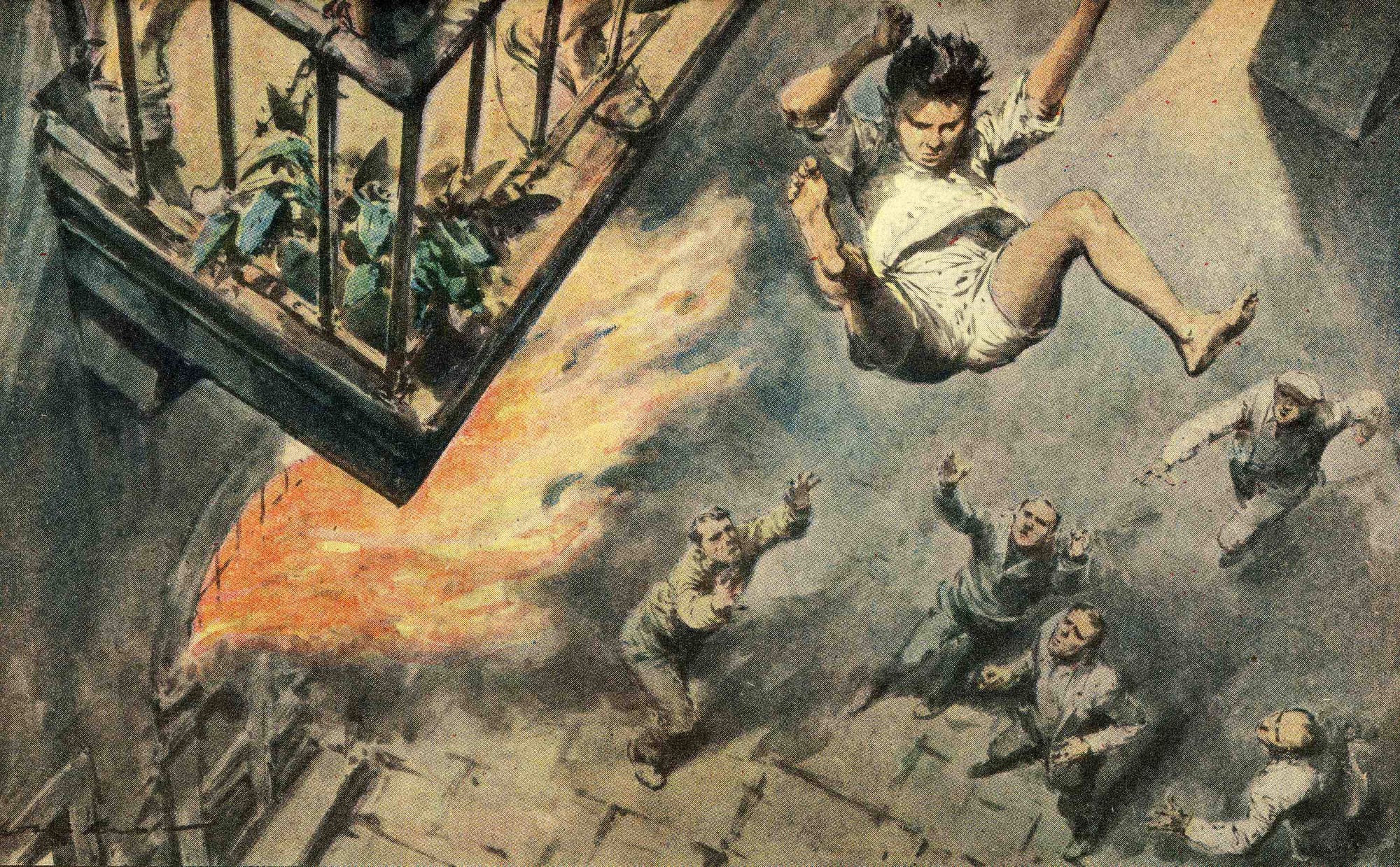
The action-packed pulp art of Italian artist Walter Molino (1915-1997) is unmistakable, catastrophic. Rubber-necker heaven.
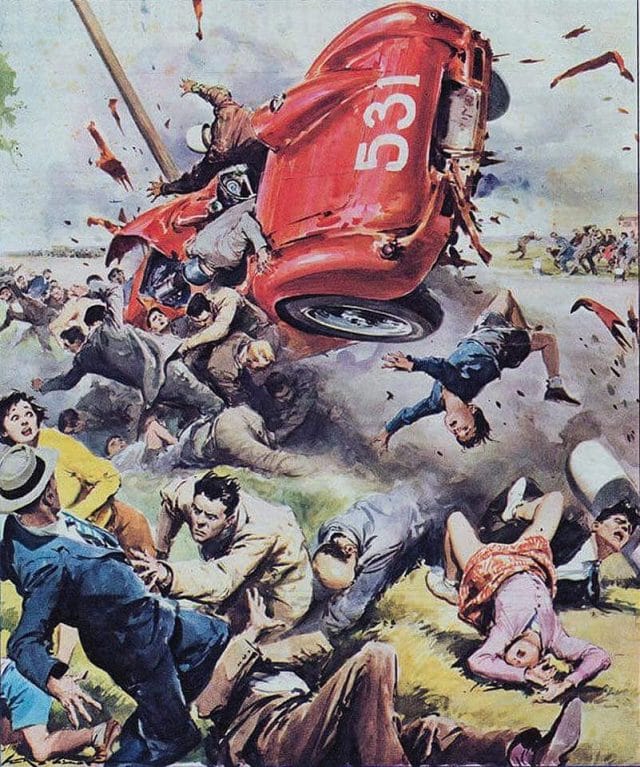
Trapped in a Molino illustration? The first thing to know is that modern conveniences are death traps. Here are a few classic Molinos that deliver the standard thrills with impeccably immediate danger.
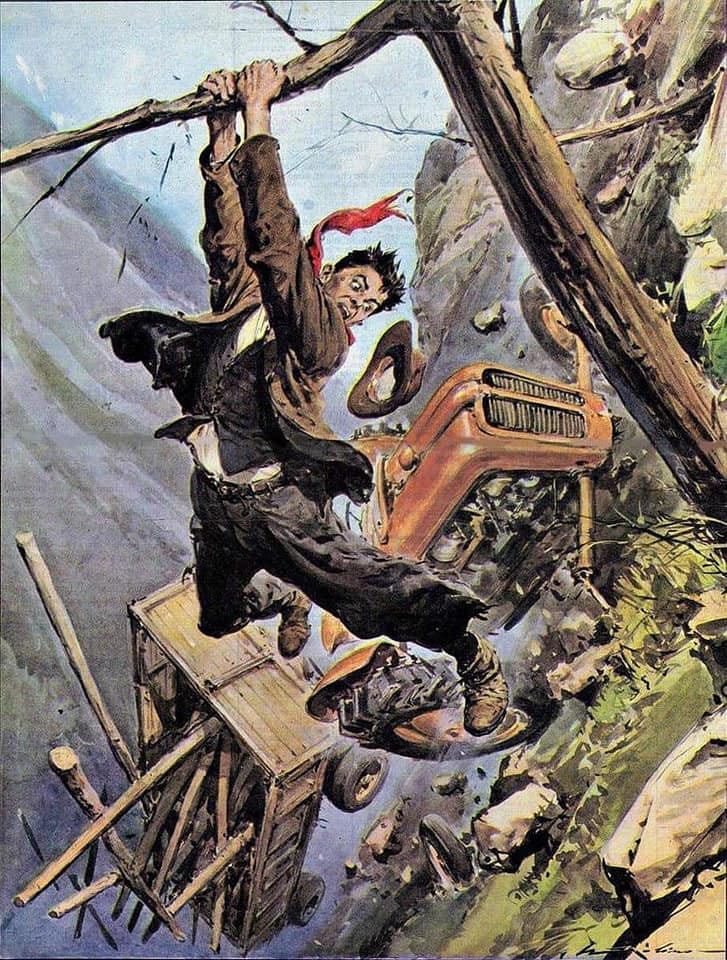
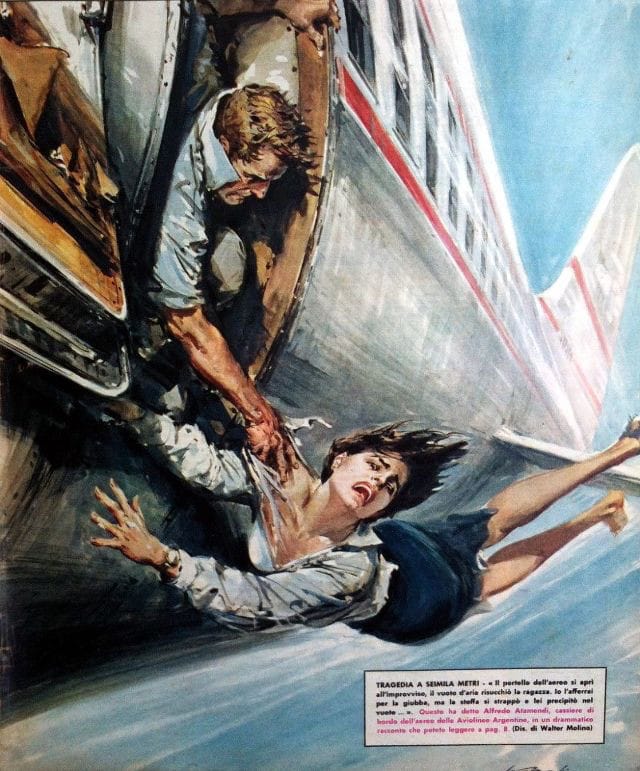
Don't even think about getting on a trolley car.
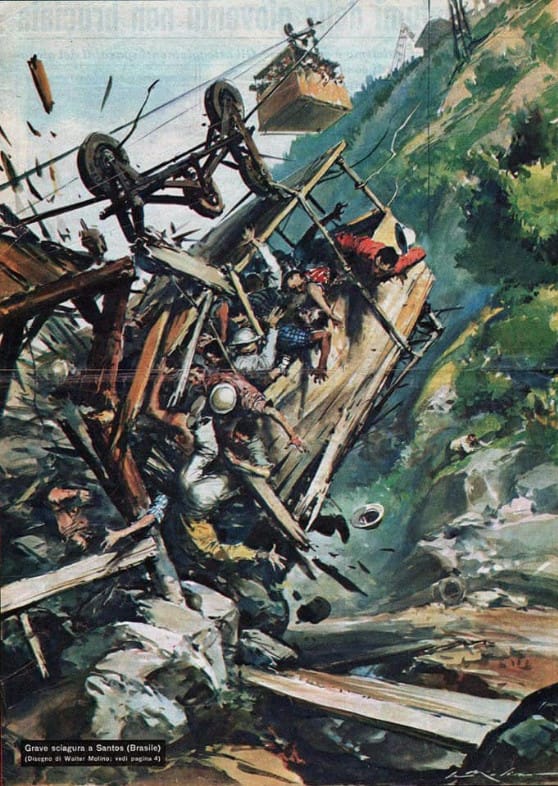
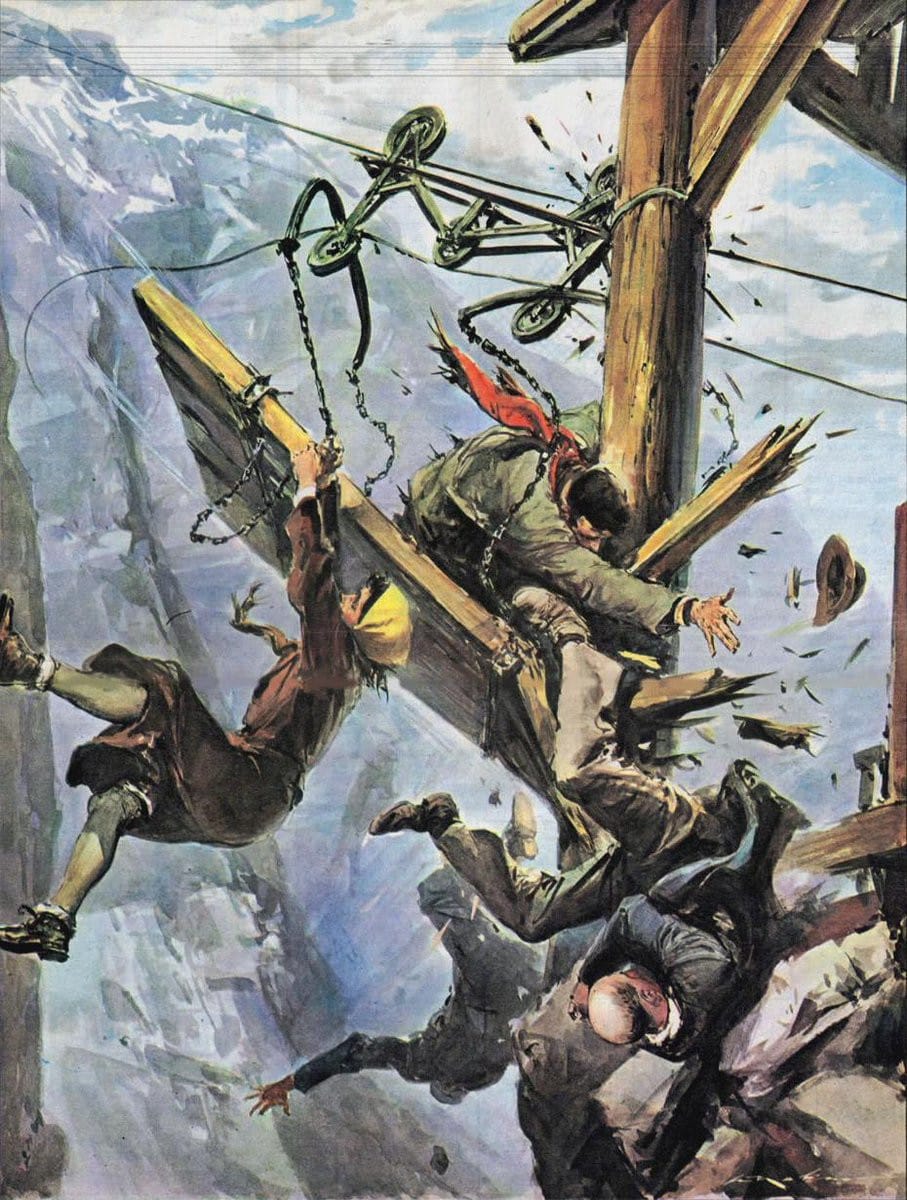
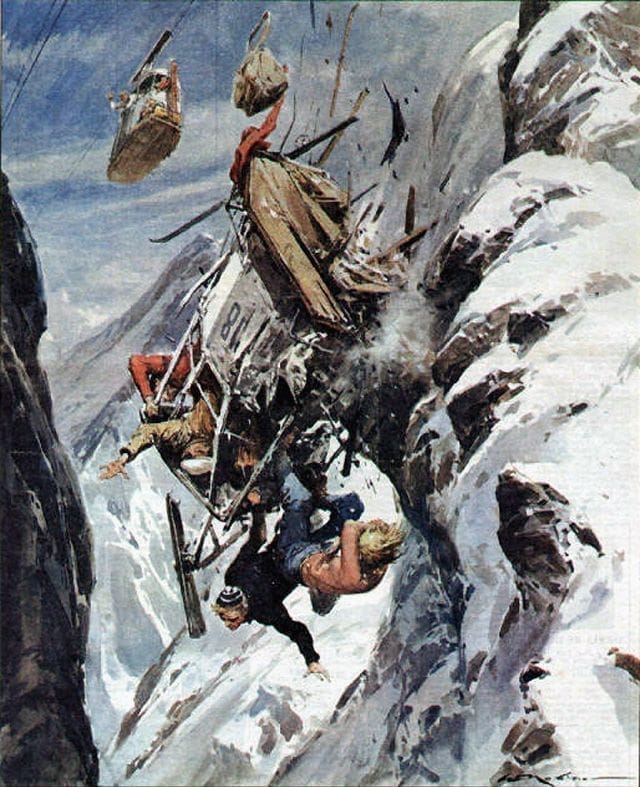
More commonly, though, Molino includes an unexpected detail or scenario. Perhaps an animal is responsible:
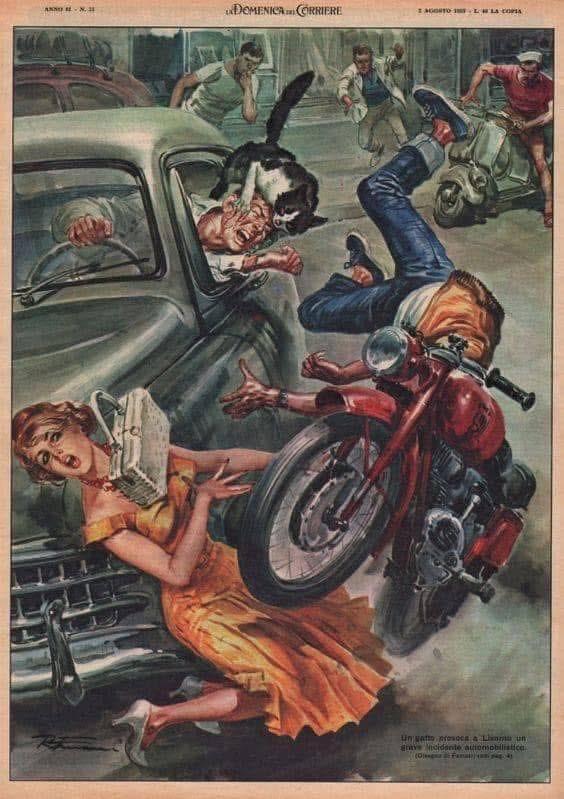
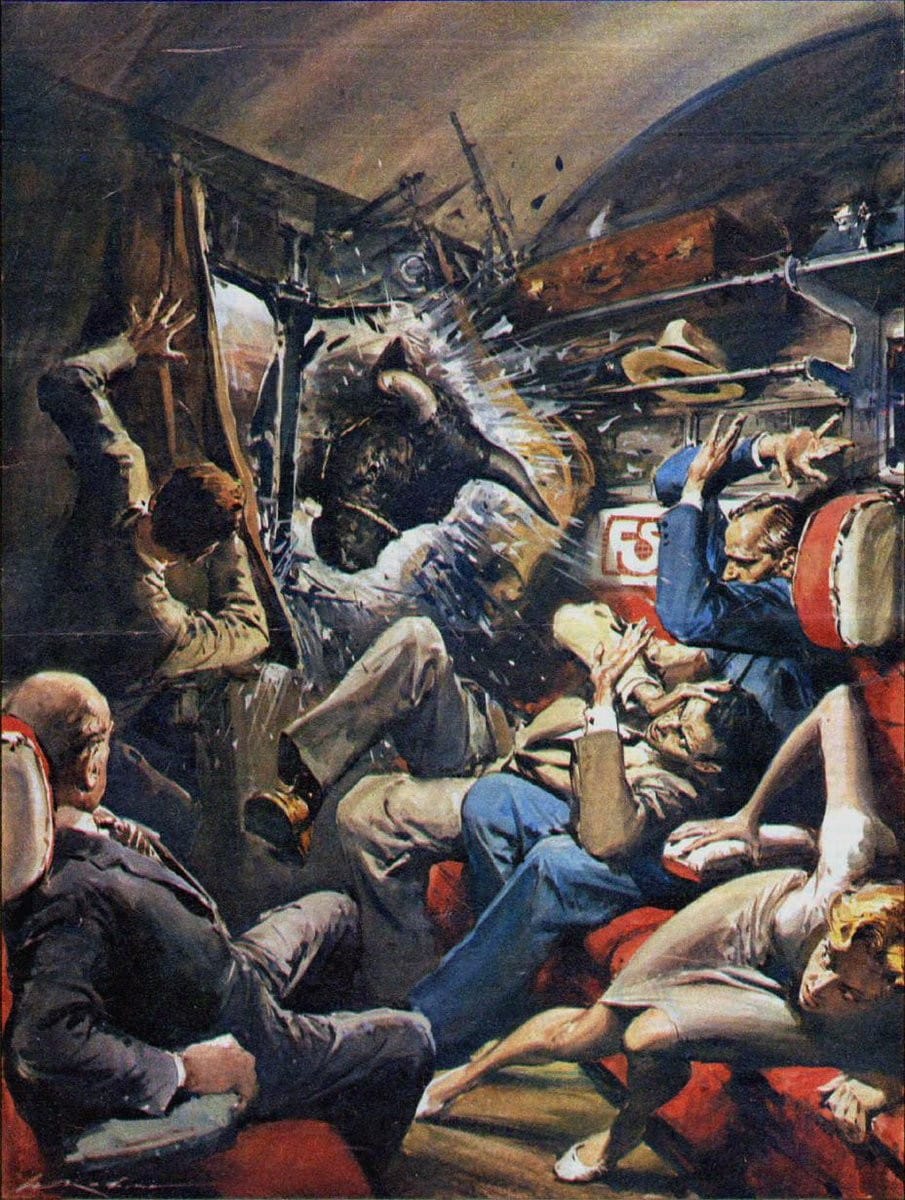
Or a college stunt has gone wrong:
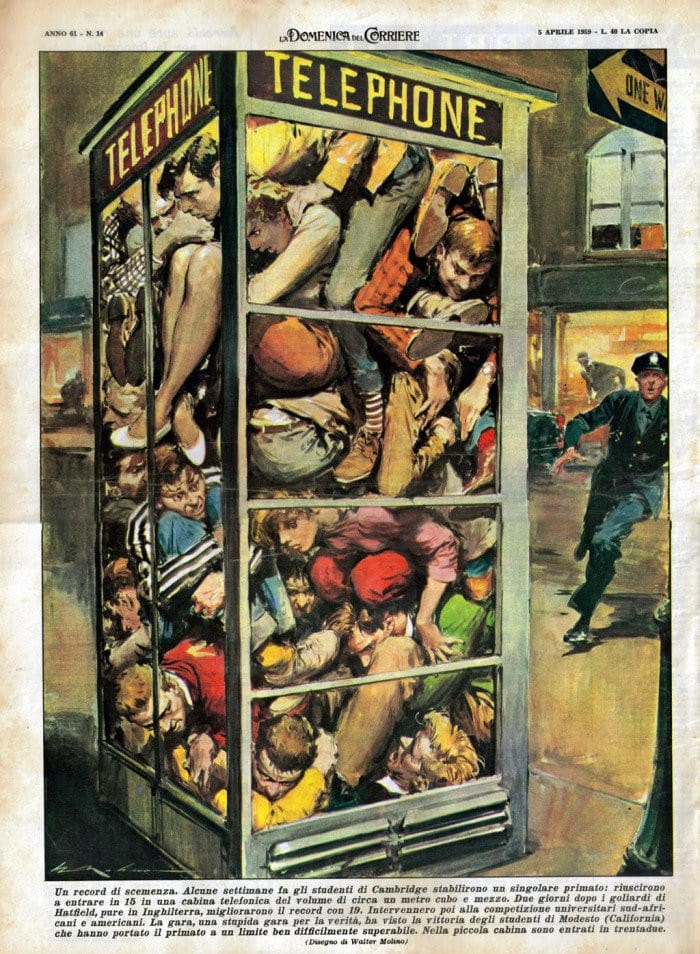
Or a malicious inflatable elephant has exploded.
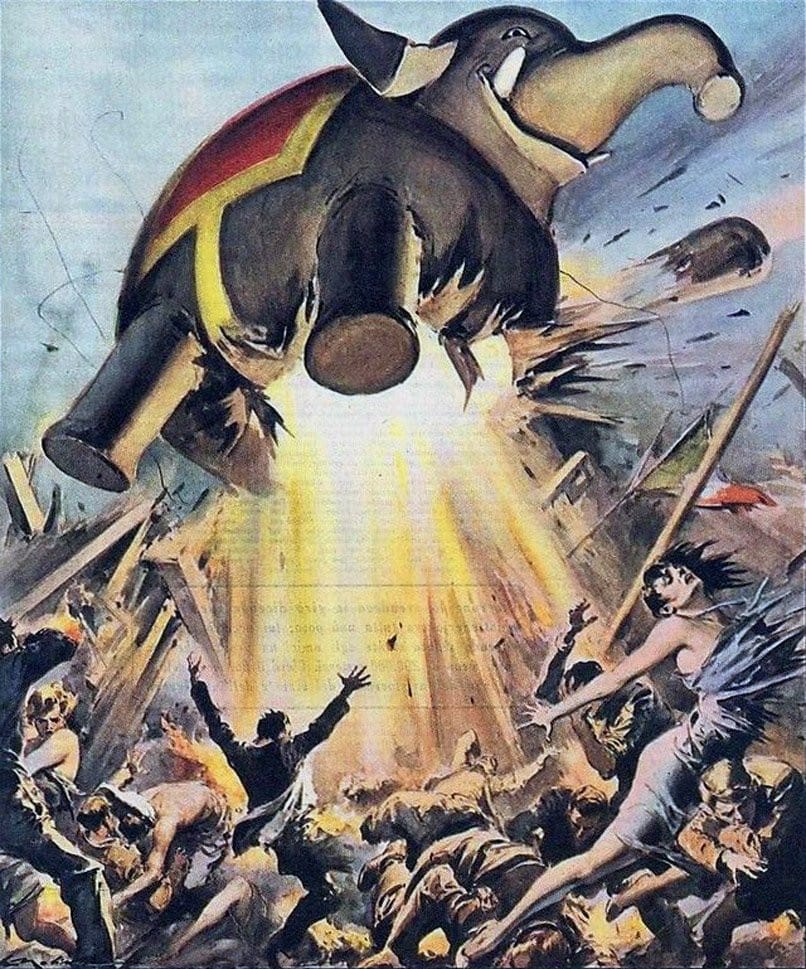
Molino might simply push the grisly melodrama firmly past any resemblance of good taste.
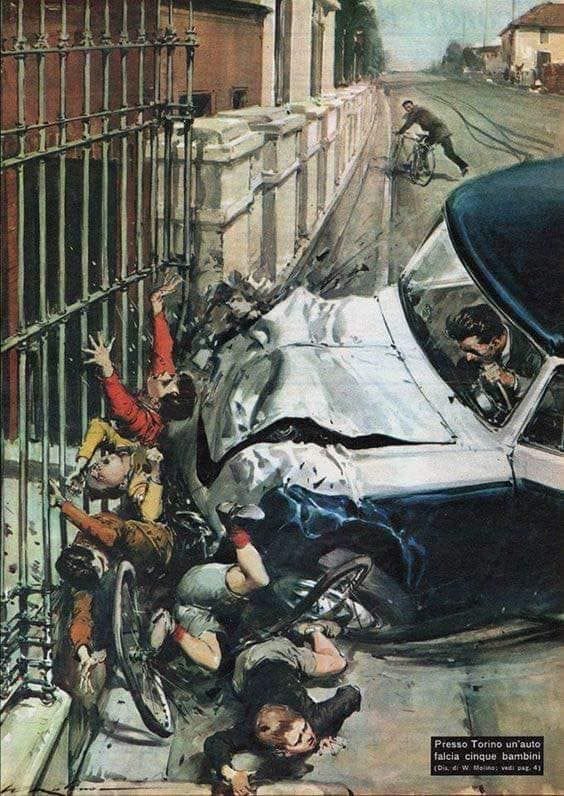
For this train collision, Molino focuses attention on the little kid clutching a doll. He not only guides the viewer's eye using that spray of metal shards, but he even frames her through the car door window.
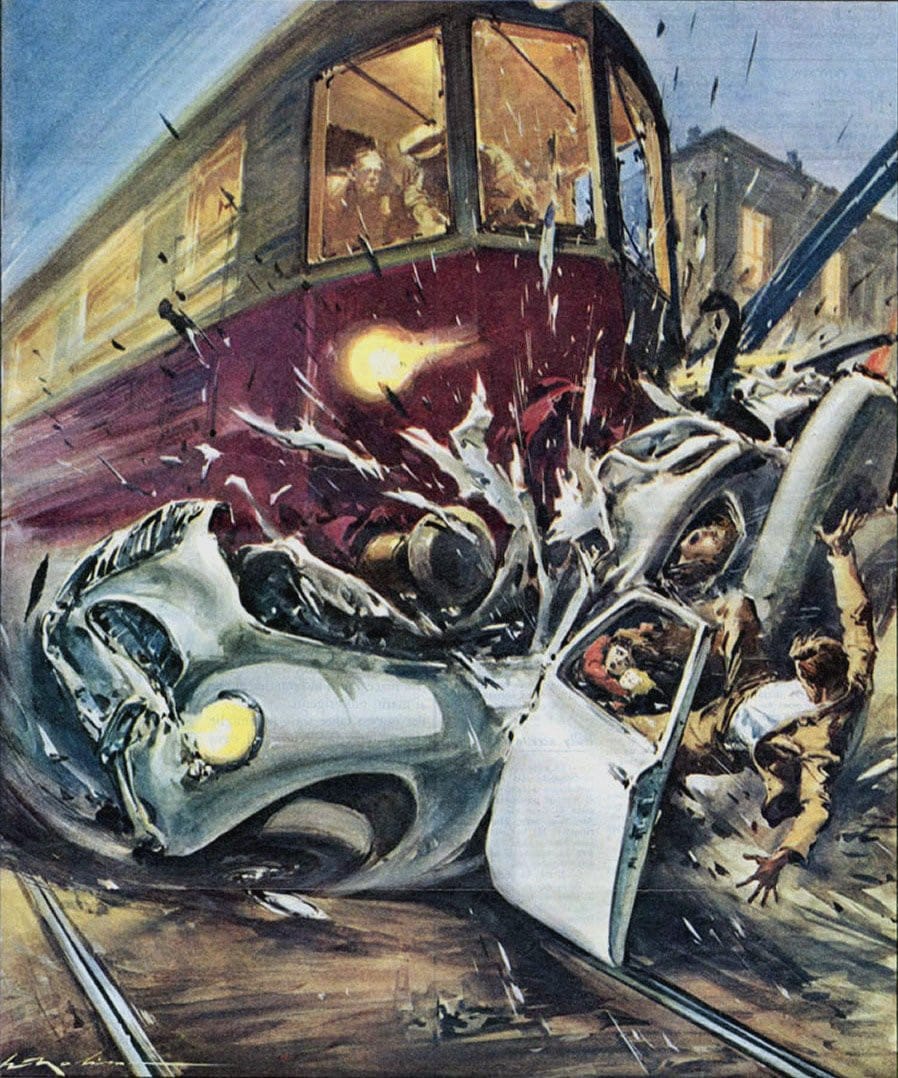
Rhode Island School of Design's professor of Illustration, Fred Lynch, further explains Molino's strengths as an artist in a blog post, saying:
"Molino’s style and substance match perfectly. His very realistic style and his cinematic way of picturing things are well connected with the storytelling. The flawless anatomy, extreme foreshortening, and difficult perspectives are masterfully done and are far more effective than a cartoony, or less vivid alternative.
The images present a clash of the ordinary and the extraordinary— of fact and fiction. In an ordinary town, on an ordinary day, a truly terrible or dramatic thing happens.
[...] While Norman Rockwell created heightened 'realistic' images of warmth and sentiment, Walter Molino created them for drama and destruction. Comparing their concepts, colors, and compositions can teach you a lot about illustration."
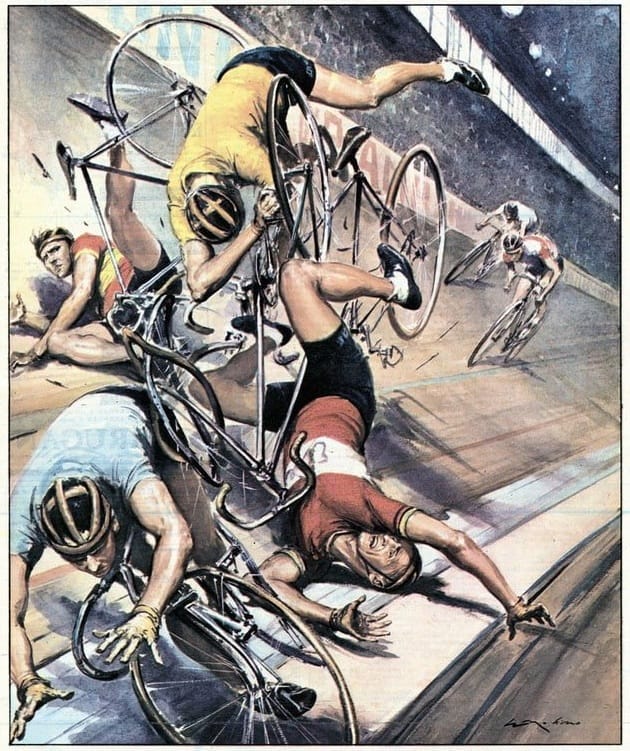
But Molino's career included one big ace in the hole that simply examining his style won't reveal.
He spent decades as the cover illustrator for La Domenica del Corriere, a popular Italian weekly newspaper that ran from 1899 to 1989, and first started his tenure in 1941. His job was to illustrate the flashiest story from each week, giving him an endless series of bizarre or gory narratives to feature.
That's why so many of his works have an oddly specific, "Ripley's Believe-It-Or-Not" feel: He was constantly being asked to cover stories like a cat causing a traffic accident or a woman getting sucked out of an airplane.
A lot of fans online miss this context, and so they don't realize that Molino didn't make this stuff up. (although to be fair, someone else might have!)
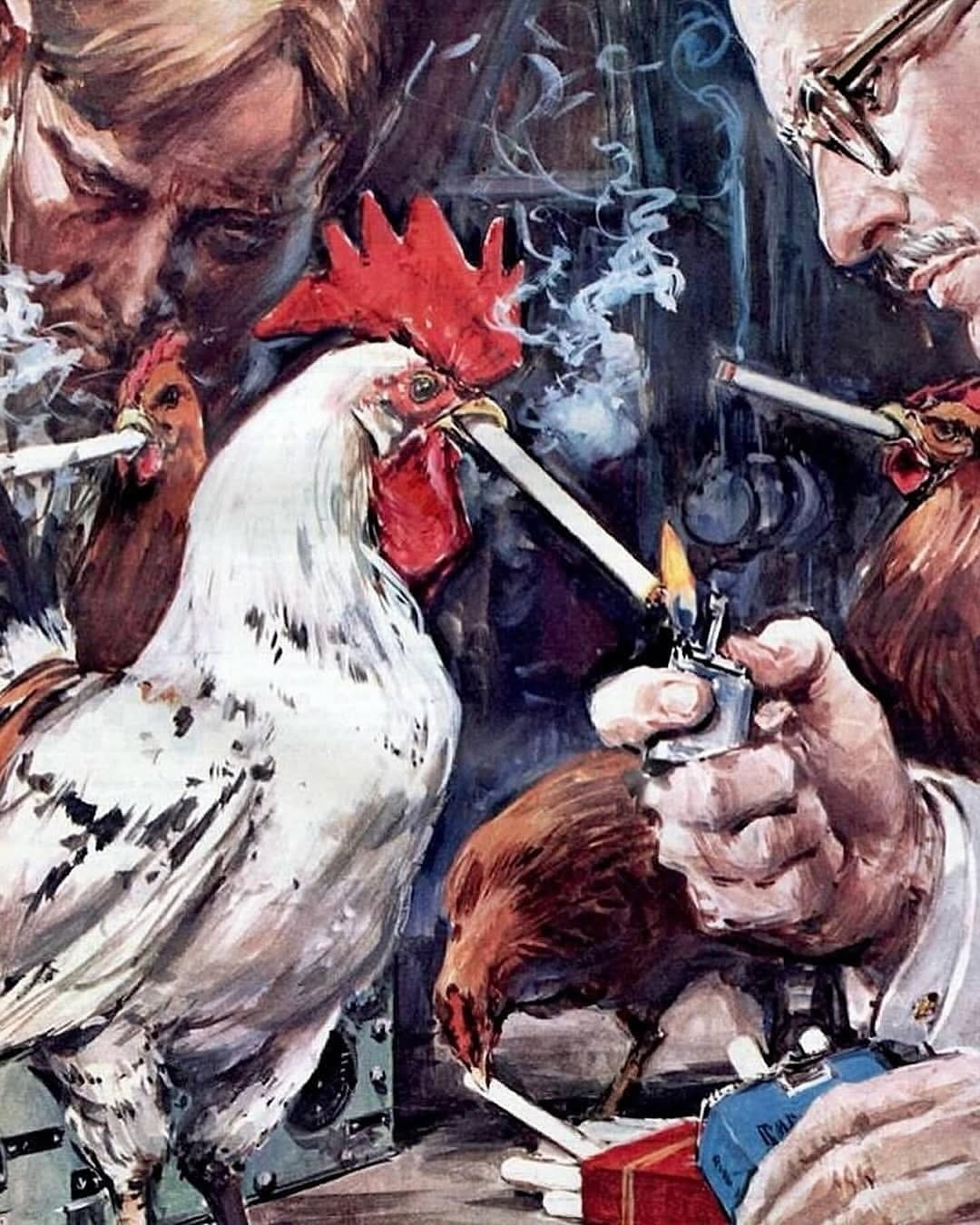
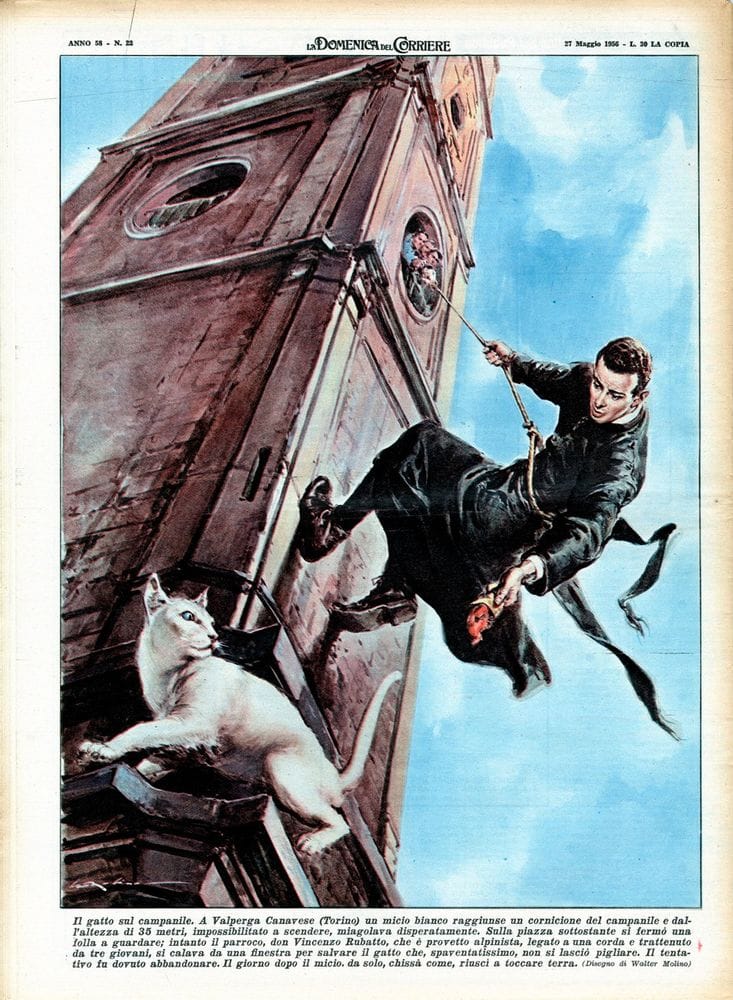
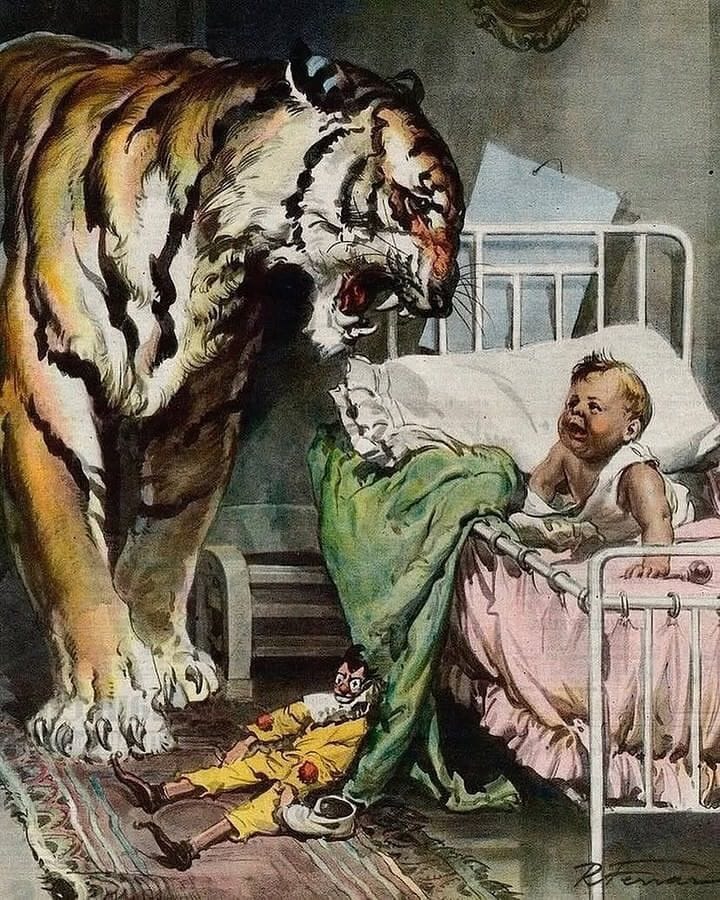
Some of Molino's cover illustrations might as well have been PSAs against common activities like setting off fireworks or going on a picnic.
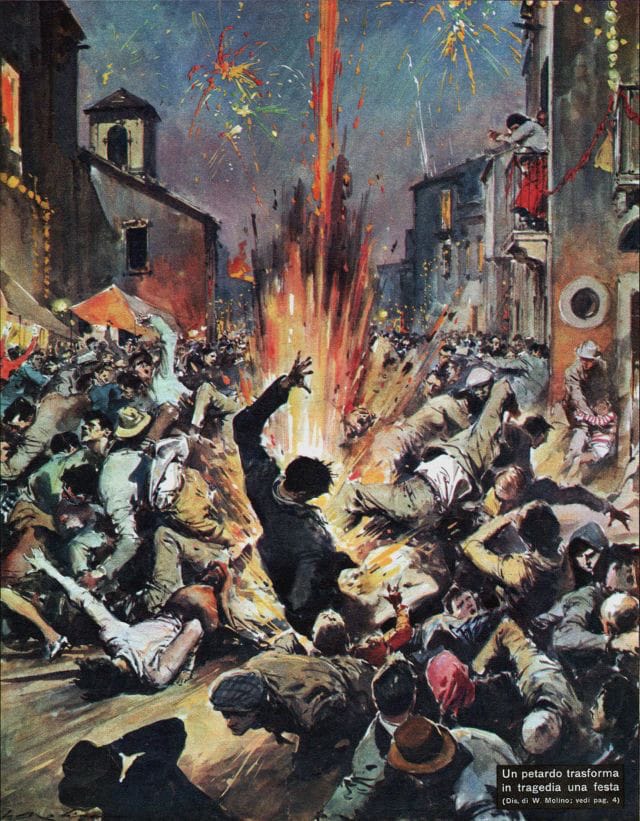
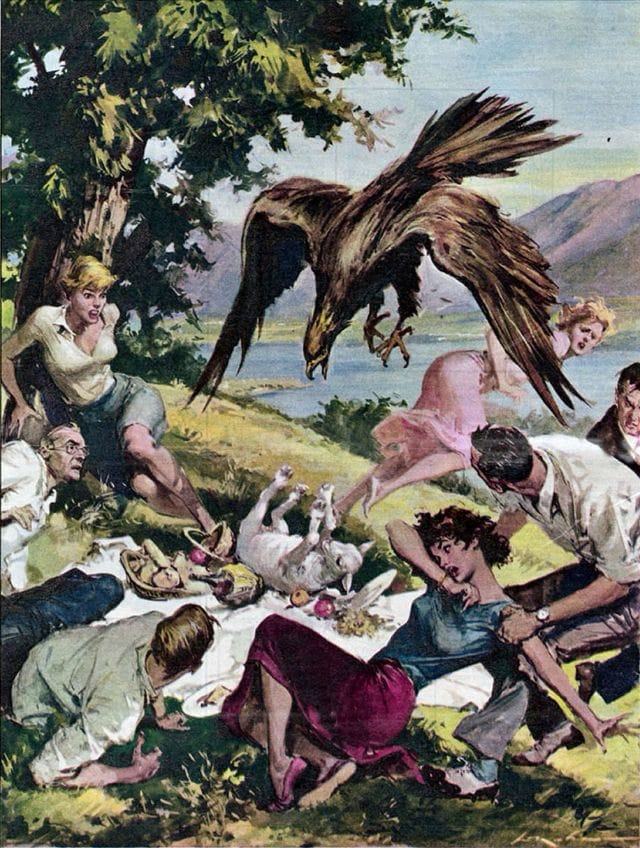
Sometimes Molino's art even seems to be spilling into other genres, further corrupting them with explosive kinetic energy. You thought you could enjoy some Monet water lilies? These swans'll kill you!
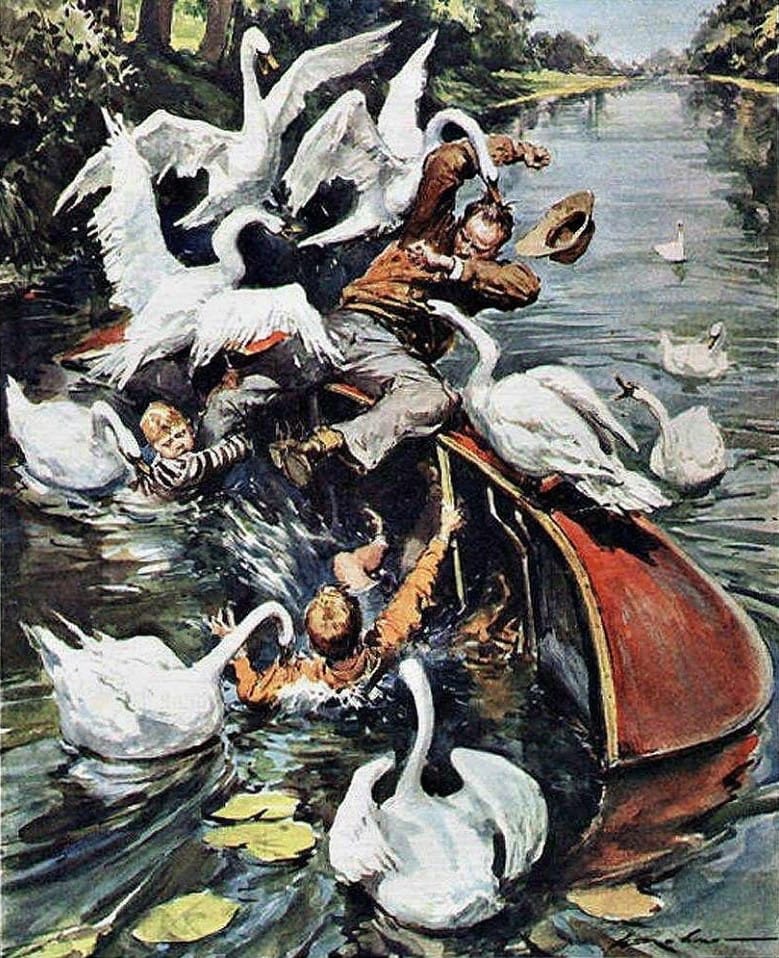
Molino makes his opinion on avant-garde art pretty clear, as well, with this particular illustration.
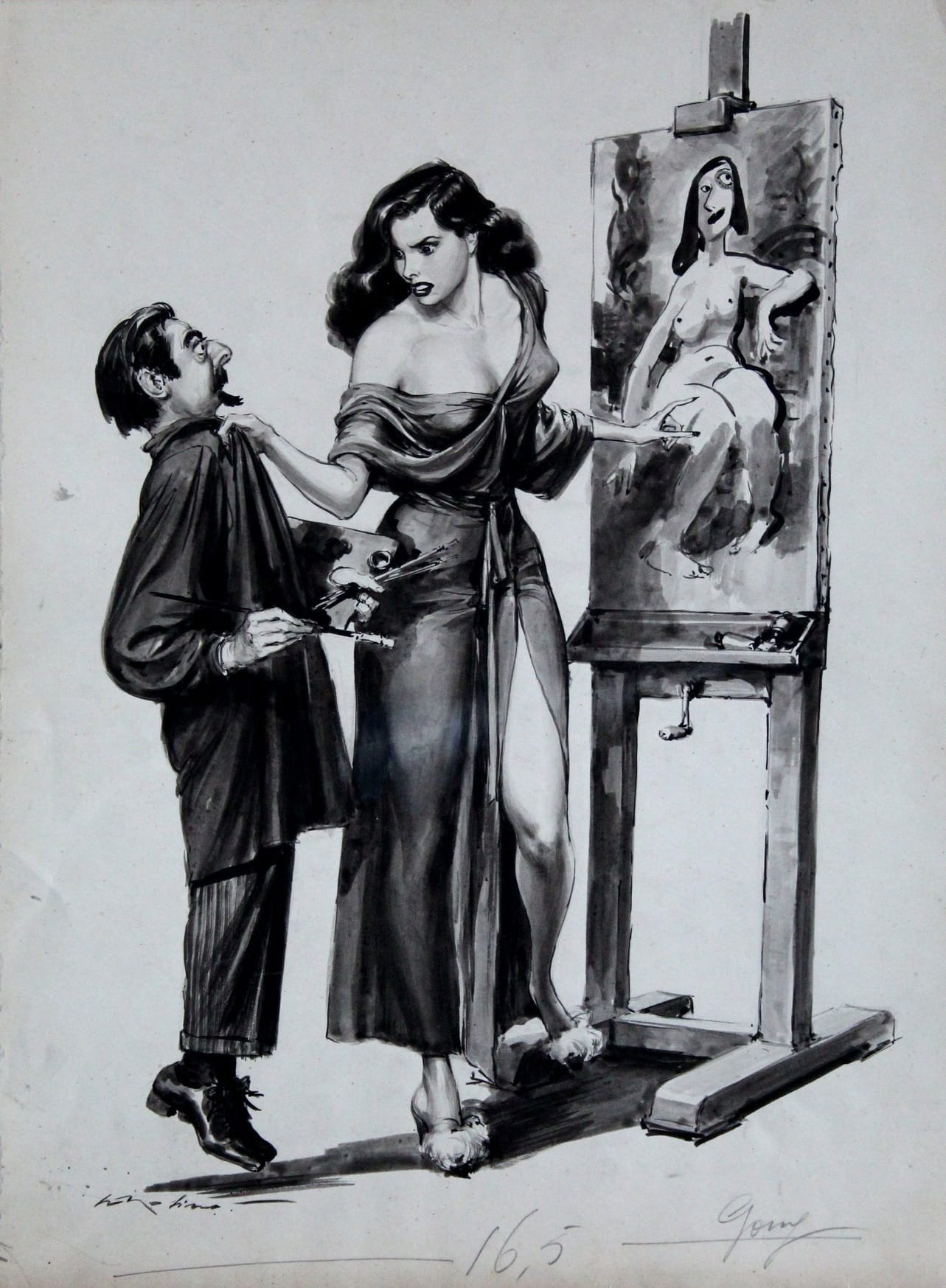
Does anyone have it easy in the world of Walter Molino? Perhaps the best you can hope for during your busy schedule of car crashes and animal attacks is simply being caught in the rain.
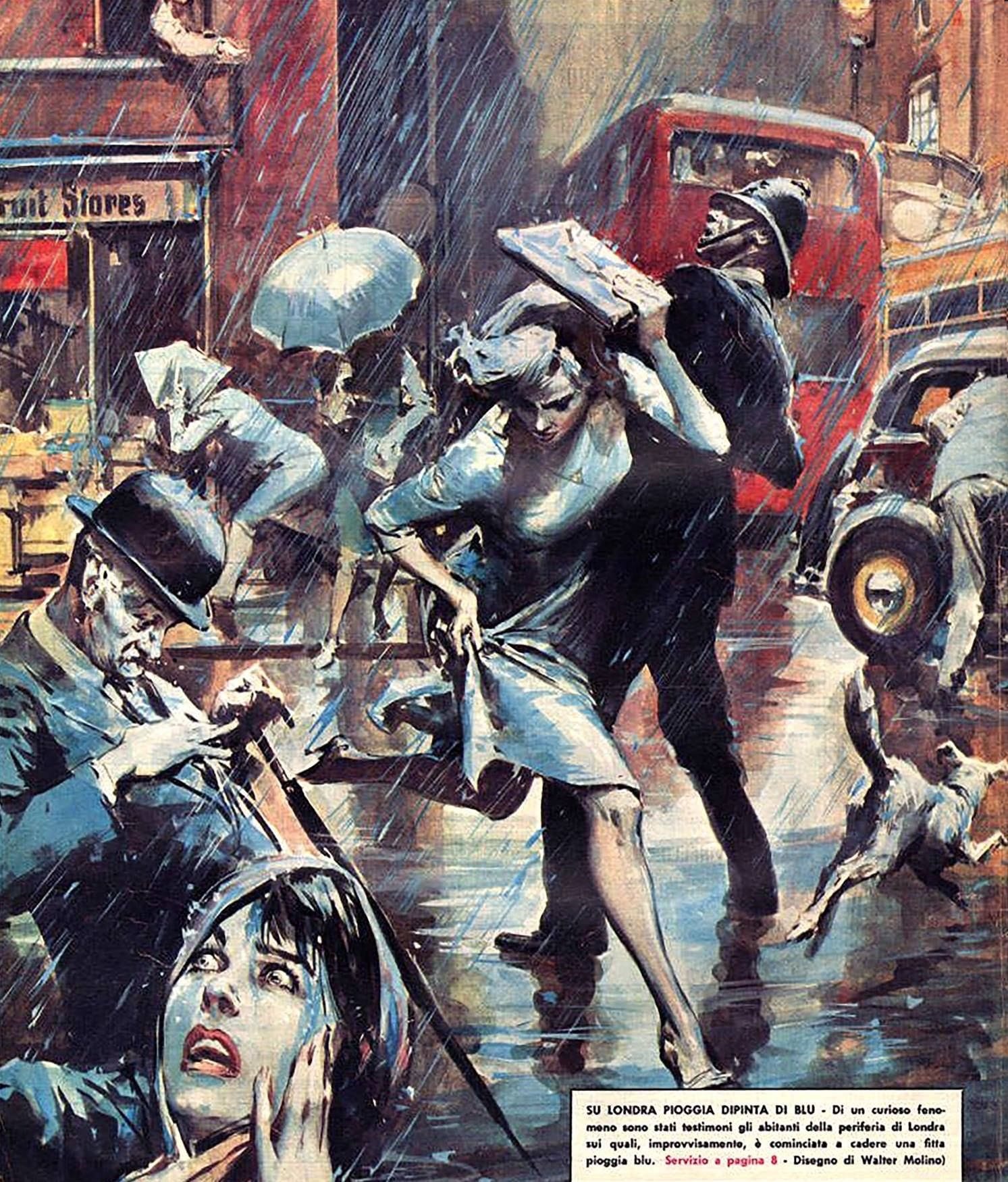
Or maybe getting the chance to spot Tatzelwurm, the legendary cat-snake of the Swiss Alps. That might be fun.
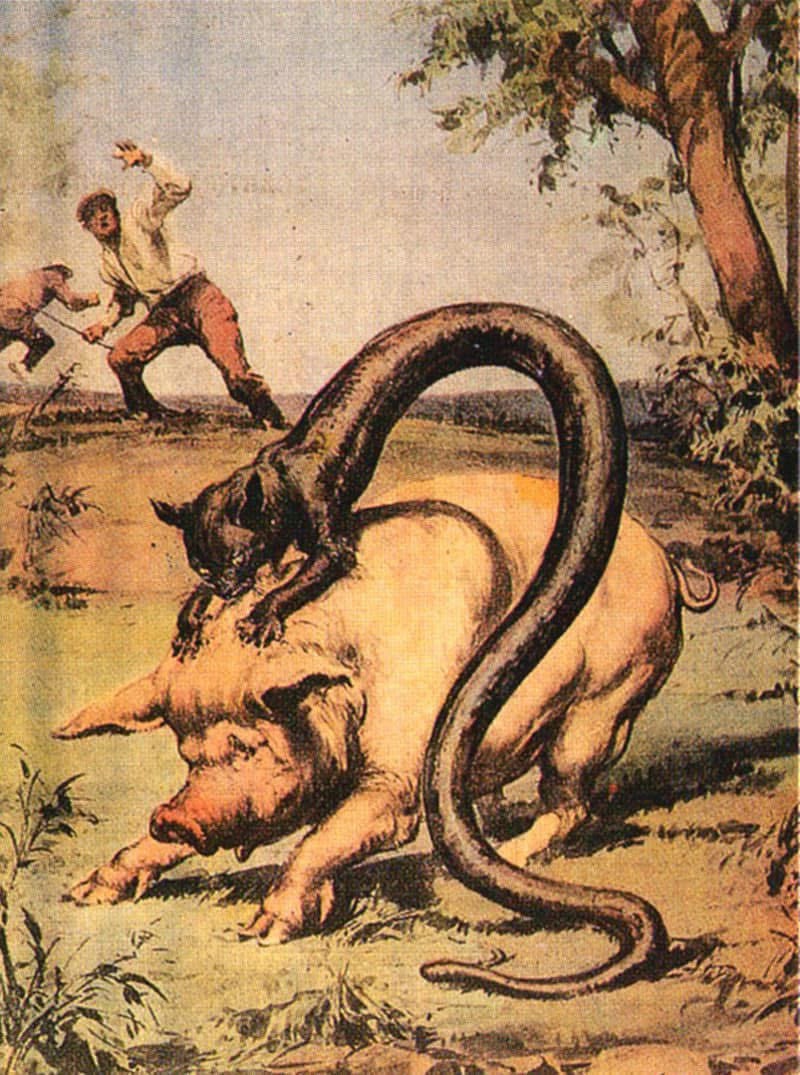
And what's more relaxing than a smoke break the whole family can enjoy?
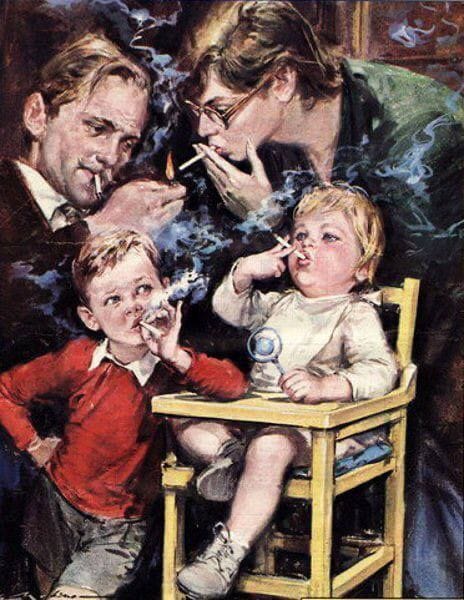
Molino wasn't big on science fiction, but like any mid-century illustrator, he has his fair share of UFO sighting art, some more placid than others.
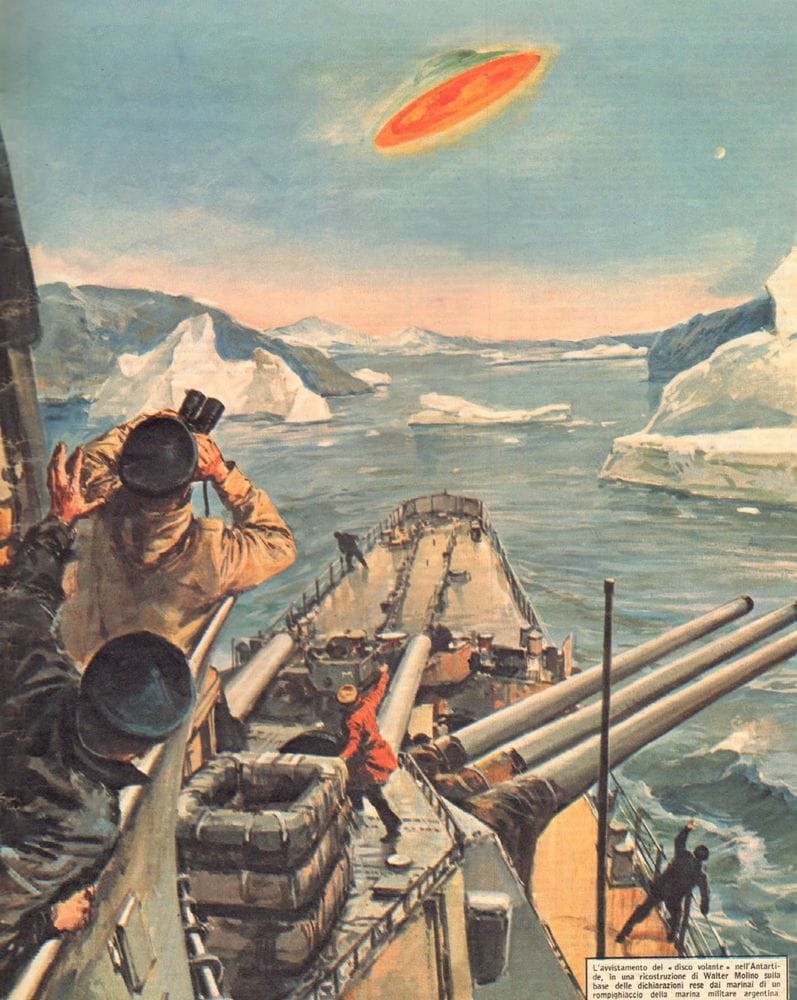
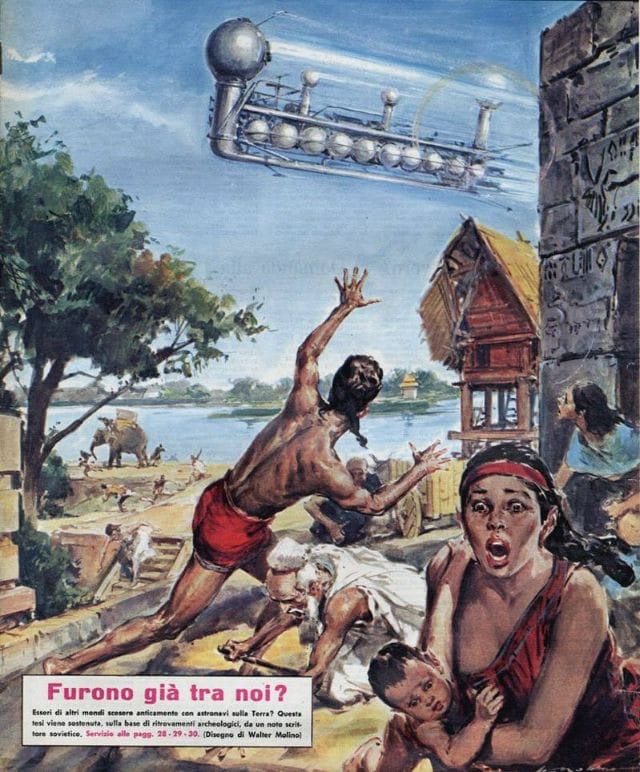
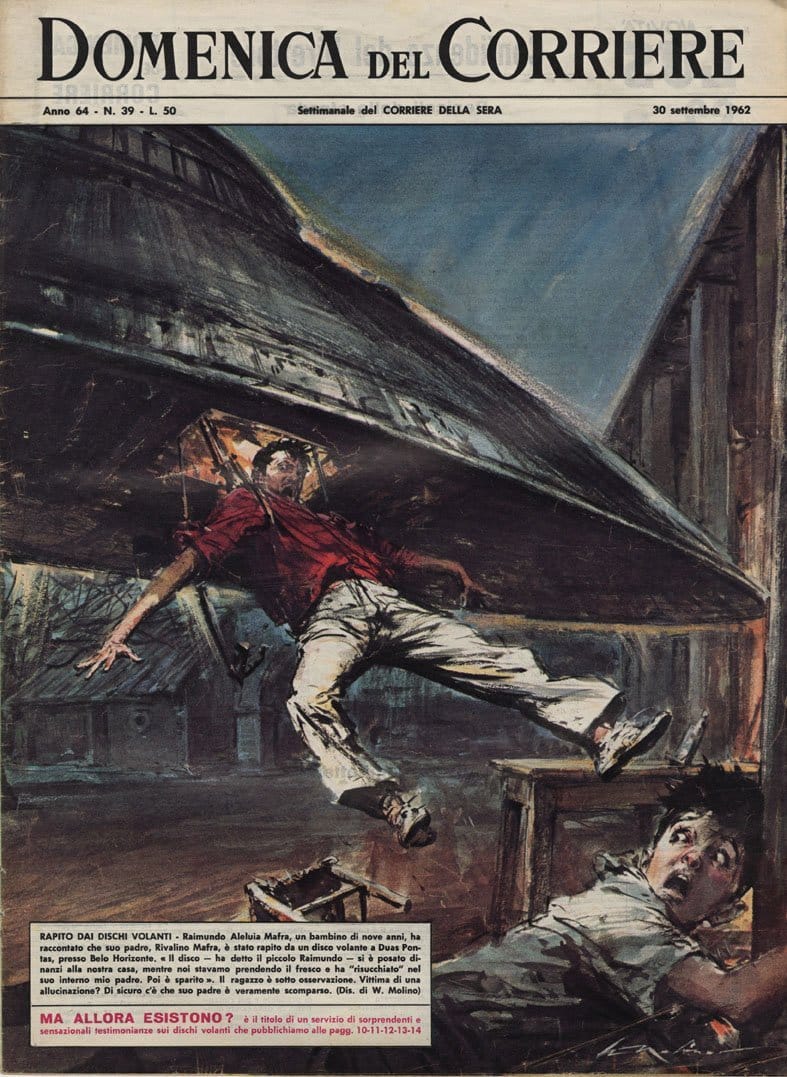

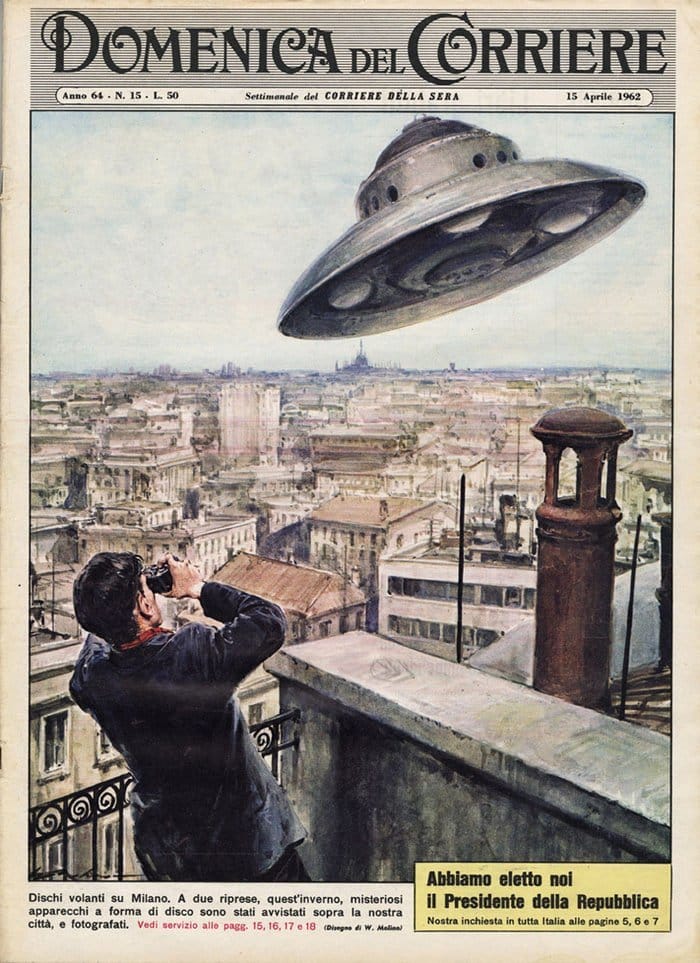
See, I'm still including a little sci-fi art in this post!
He also covered a few predictions of the future.

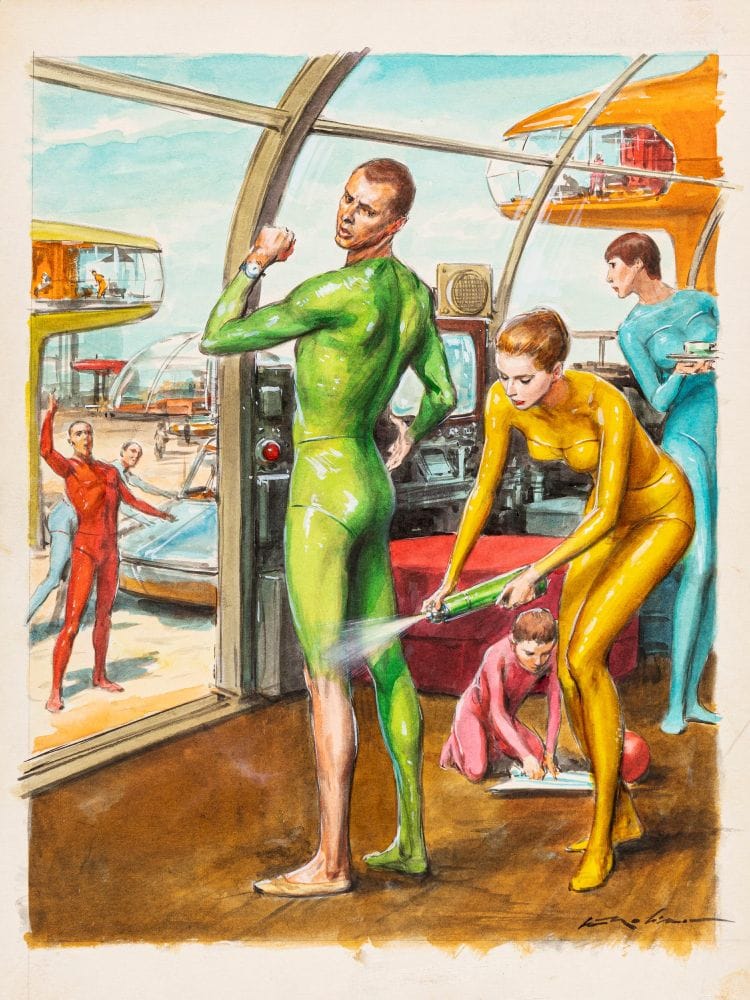
As well as some cryptids and ghosts.
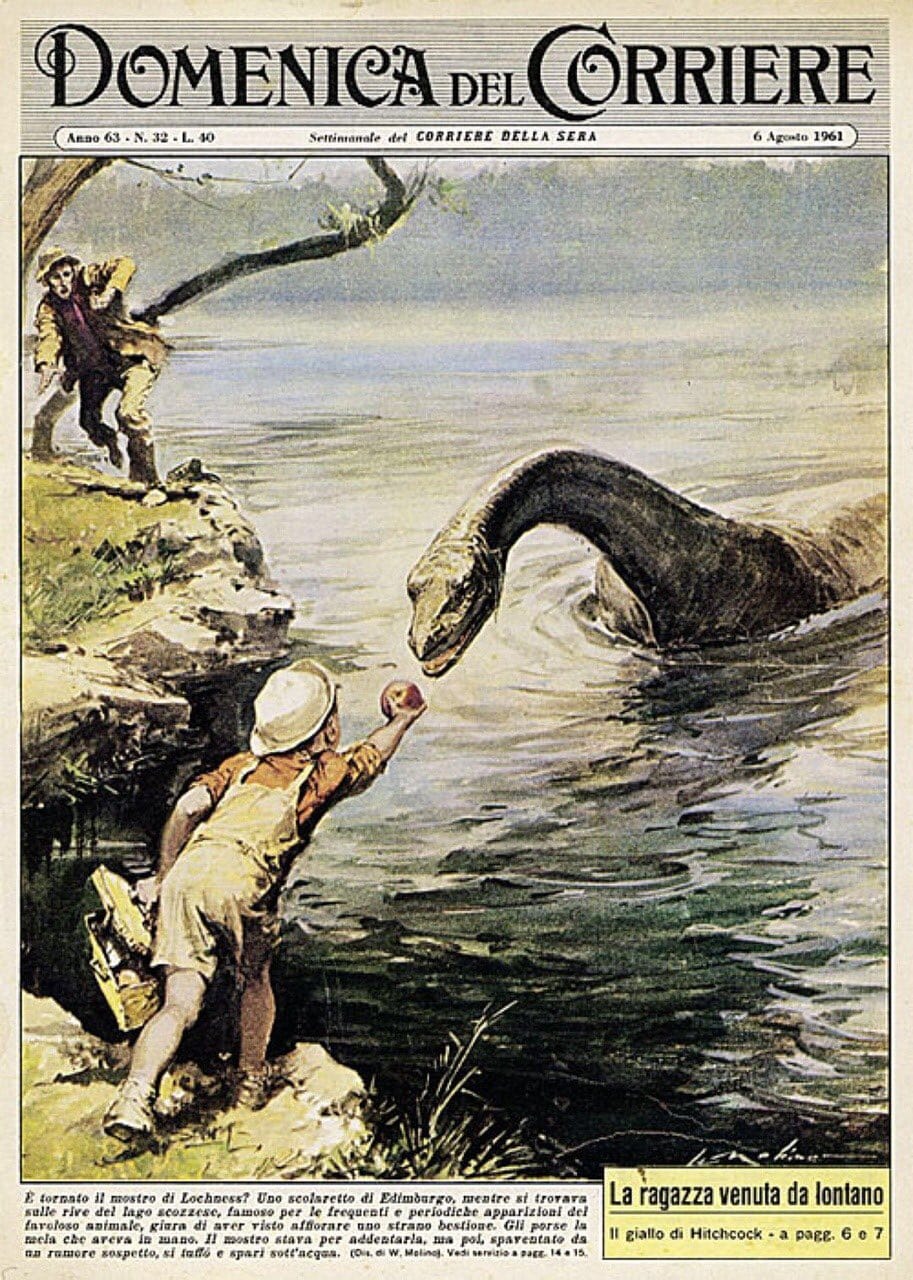
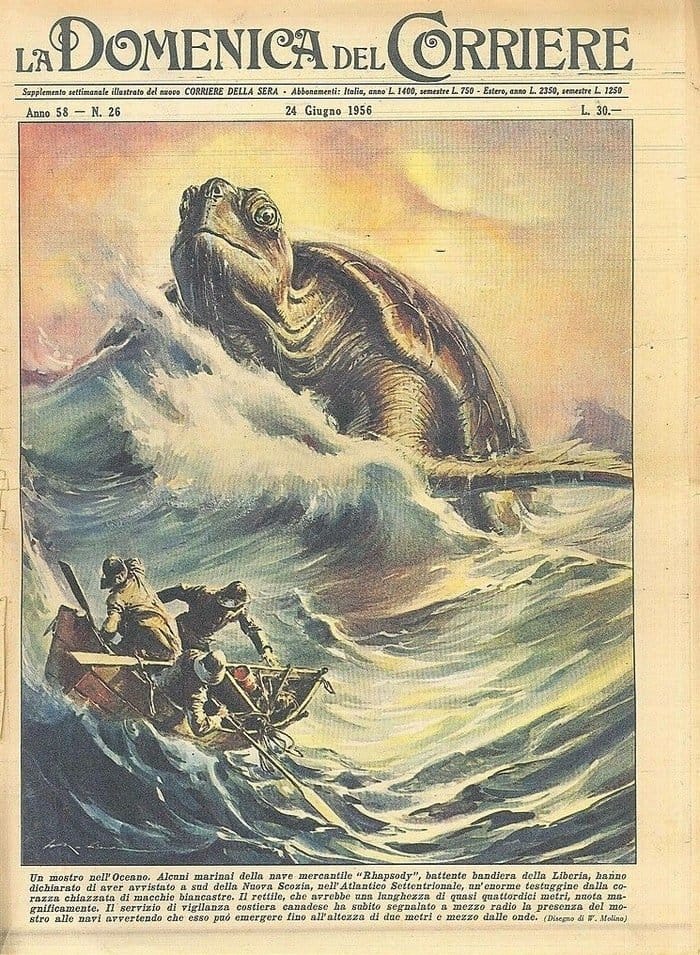
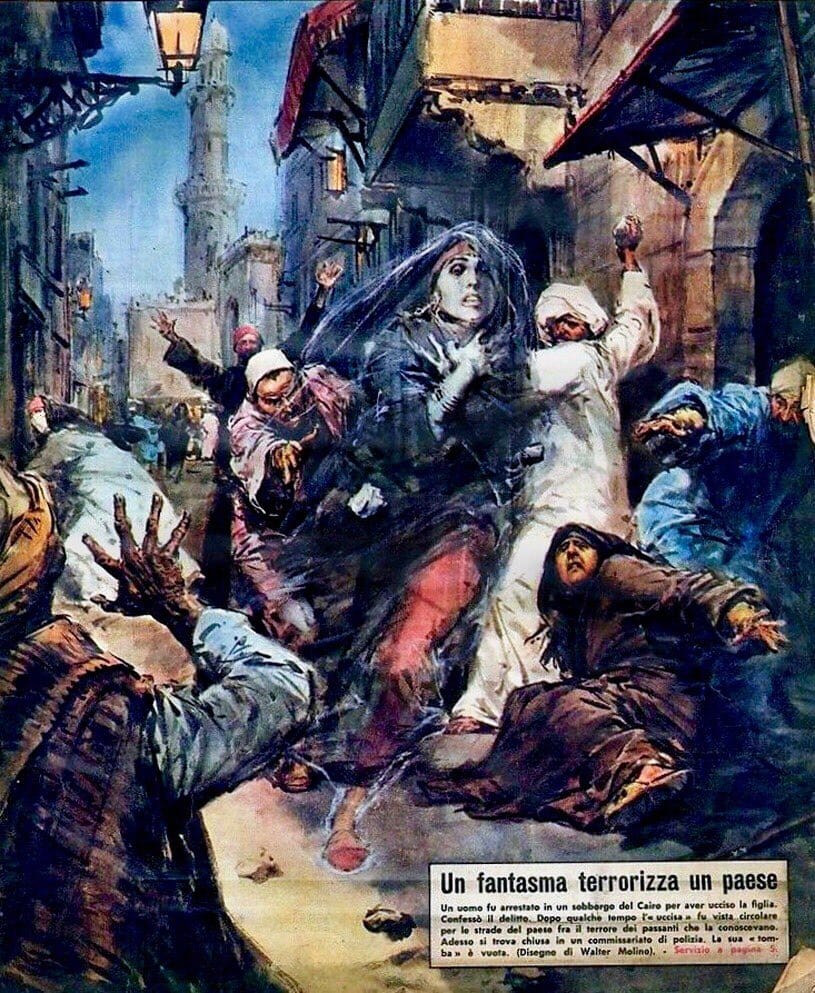
Magazine pulp illustrators tend to have a bit of a short leash, with art directors frequently looking for consistent, dependable journeymen.
Here's illustrator Shannon Stirnweis recounting advice from paperback artist Gerald McConnell:
"McConnell said well, if you want to do black and white or two-colour men's magazine art, just go see Larry Graber at Magazine Management. And he said, 'Don't try to do better than what they're doing - just do exactly what they're doing.'"
Molino's art certainly delivers consistency, but it's always just a tiny bit more lurid or grotesque than you might expect. Not enough to buck the norm, but enough to turn someone's head, sell a few extra newspaper issues, and earn Walter Molino a legacy as a pulp-art all-timer.
This robot didn't really need those upsetting duck lips. But they make it pop!
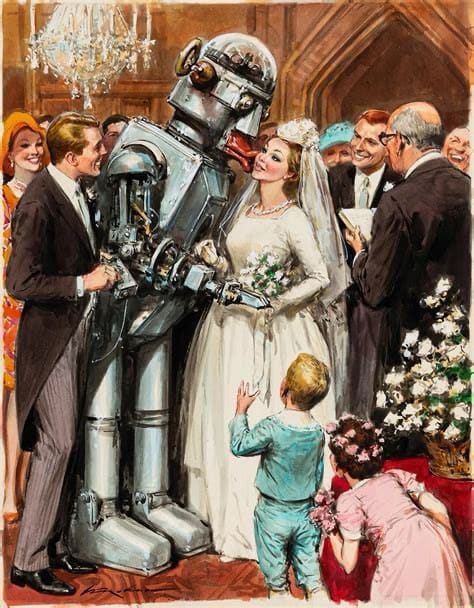
Cool link
Legends of the games industry: Roger Dean - Spillhistorie.no
Here's a new interview from 70s sci-fi art legend Roger Dean, covering his video game-related work. Lots of fun insights that I'd never heard of, like the fact that Dean designed the official logo used for the Tetris brand between 1997 and 2019.
Music rec: Here's three fun new Halloween mixes. It Came from the 80's X, The Horrortape Vol 14, spider-verse mix. Yes, my timing's great.
Next Time: Brains